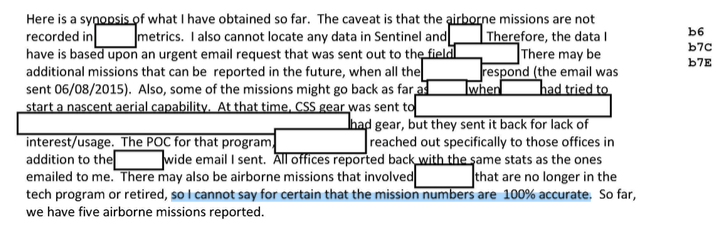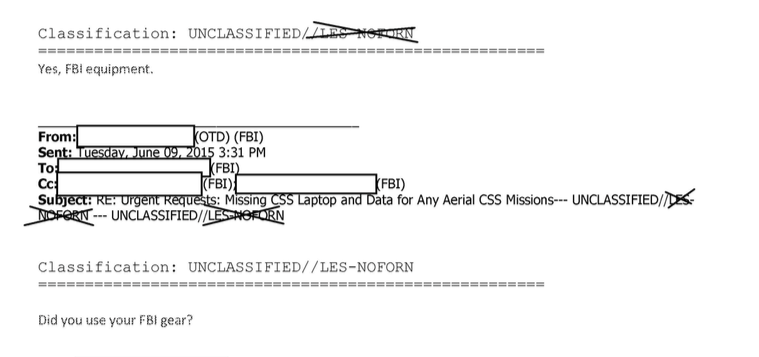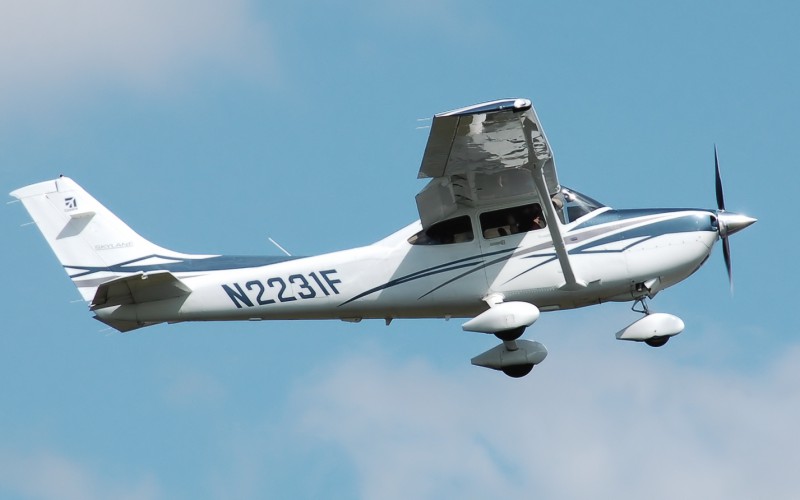With no oversight, FBI agents collected American cell phone data by air
EFF recently received records in response to our Freedom of Information Act lawsuit against the Department of Justice for information on how the U.S. Marshals — and perhaps other agencies — have been flying small, fixed-wing Cessna planes equipped with “dirtboxes”: IMSI catchers that imitate cell towers and are able to capture the locational data of tens of thousands of cell phones during a single flight. The records we received confirm the agencies were using these invasive surveillance tools with little oversight or legal guidance.
The Wall Street Journal revealed that the Marshals have been flying planes using DRT’s Stingray-like technology since 2007. The planes reportedly were based out of five metropolitan airports and shared by multiple agencies within the DOJ, even as sources within the agency questioned the legality of the program. A follow-up articlereported that the CIA provided cell phone tracking equipment to the Marshals and then spent years helping them develop and test this capability for use in a law enforcement capacity within the United States.
After months of stalling, the government finally produced records from agencies including the Marshals, the FBI, and the DOJ’s Criminal Division, which oversees federal criminal prosecutions. The documents we’ve received—many with extensive redactions—are allavailable here.
The FBI produced the majority of the records—hundreds of pages of heavily redacted material. The documents are mostly internal emails and presentations going as far back as 2009, including discussions between FBI lawyers and the Operational Technology Division (OTD), which develops and oversees the FBI’s surveillance techniques. The documents paint a picture that is similar to the one that has emerged around stingrays and IMSI catchers more generally: the FBI began testing and then using dirtboxes on planes without any overarching policy or legal guidance on their place in investigations.
This is best seen in a series of emails from June 2014, showing FBI lawyers really had no idea what agents at the Bureau were doing with this surveillance equipment. FBI lawyers prepared a briefing for senators who demanded more information regarding an Associated Press report about the FBI’s use of aircraft fitted with a wide range of surveillance equipment, including IMSI catchers. Lacking any comprehensive information, the OTD reached out to other branches of the Bureau to document “CSS (cell site simulator) aerial missions.” Ultimately, an OTD Special Supervisory Agent reported only five such missions, but that came with some major caveats:

Notably, these missions were carried using equipment owned by the FBI, not the Marshals.

Although the FBI’s “first successful airborne geolocation mission involving cellular technology” apparently occurred sometime in 2009, even as late as April 2014 lawyers from the FBI’s Office of General Counsel were discussing the need to develop a “coordinated policy” and “determine any legal concerns”.
As we’ve written about extensively, the government long took the position that using IMSI catchers did not require a warrant, instead relying on a lesser legal standard. Last fall, the DOJ voluntarily changed position and required a warrant for the use of cell site simulators, although the policy leaves some major loopholes, and it could be undone by the next administration. Thus, it’s not surprising that the FBI seems to have put the cart before the horse and used its nifty flying Stingrays without deliberating too deeply about the wisdom of doing so.
Given the level of detail in the original news reports about the Marshals’ use of dirtboxes, we’d expected to receive lots of FOIA documents from the agency. Not so. Instead, we got a single policy document from the Marshals’ Technical Operations Group (TOG) that discusses the TOG’s organization and procedures. There are scattered references to aerial surveillance and the use of cell site simulators, but nothing that documents the Marshals’ years of dirtbox use. While it certainly wouldn’t be the first time law enforcement agencies operated surveillance equipment without much oversight or documentation, it’s very hard to believe the operations described in the press would not have generated a bigger paper trail—contracts, purchase orders, contracts, legal memoranda, and so on. We asked for these documents in our FOIA request, and we’ll be arguing that the Marshals Service didn’t follow the law when it responded with this single document.
We’re sure there’s more to be gleaned from these documents, so we encourage you to look through the documents and see what you find. And, of course, we’ll be hoping to force more transparency when we challenge the government’s redactions in court later this spring.

No comments:
Post a Comment
Thanks for commenting. Your comments are needed for helping to improve the discussion.